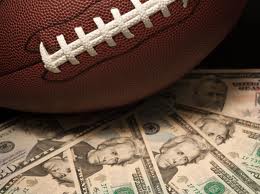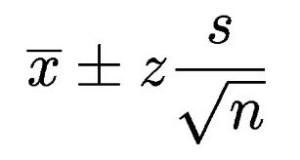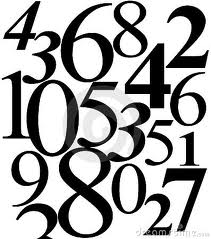I am the greatest college football totals handicapper EVER!

I am the greatest college football totals handicapper ever is the title of this post, but this article is not so much about college football totals as it is about adjusting your college football handicapping methods from year to year (or month to month if necessary).
If there is one thing I have learned, it is you can’t stand pat on the same old handicapping methods every year because college football changes so much from season to season, maybe more than any other major team sport.
Unfortunately I had to learn this lesson the hard way. From 2004 thru 2009 I had a fantastic record betting on college football totals. I may not have been the greatest college football totals handicapper ever, but I thought I was pretty darn close.
6 Years, 600 College Football Totals Wagered, 60%.
2005: 35-21 62.50%
2006: 41-29 58.57%
2007: 49-38 56.32%
2008: 80-48 62.50%
2009: 101-61 62.35%
Total: 356-236 60.14%[/box]
For you math wizards out there, please correct these numbers if I am wrong, but I believe my Z score was 3.7776.
Approximate results in Excel:
Z =(356/1.1-236)/SQRT(592*10/11) ≈ 3.7776
p(z < Z) = NORMSDIST(3.7776) ≈ 99.99208%
Exact results in Excel using the binomial distribution:
P = BINOMDIST(356-1,592,52.381%,1) ≈ 99.9912%
Which means the odds of me being on a 6-year, 600 game sample size college football totals lucky streak were pretty much 0%. I knew what I was doing when it came to betting on college football totals, and I was on a roll.
And It Wasn’t Rocket Science Either
Sometime in early 2004 I had read an article about how the public loves to bet on the over in the NFL, yet overall the games went under around 51.5% of the time (I never confirmed this number, but I thought the premise that the public preferred to wager on the over was sound).
My theory was that if the NFL betting public preferred to wager on the over, then that was probably also true when betting on college football totals. And starting at 51.5%, you’re already less than 1% from break even, so a few tweaks here and there and I should be able to produce a profit.
My initial formulas were pretty simplistic. I concentrated on teams that liked to run the football a lot and played good defense.
I Had Discovered the Winning Formula for Betting College Football Totals
 Before the 2008 season I added some running and passing efficiency numbers to my overall college football totals formula. My confidence was soaring and as the above table indicated, I really started to ramp up the number of college football totals I was wagering each year. The next two years produced an overall record of 181-109 = 62.41%
Before the 2008 season I added some running and passing efficiency numbers to my overall college football totals formula. My confidence was soaring and as the above table indicated, I really started to ramp up the number of college football totals I was wagering each year. The next two years produced an overall record of 181-109 = 62.41%
Another thing I had noticed was that in the first half of the season I was hitting nearly 66% of my college football totals. As the season progressed, my win percentage slowly dropped into the mid-50 percentile.
Overconfidence = Major Bankroll Decline
I went into the 2010 season with one thing in mind; find as many college football totals as possible in the first 8 weeks of the season to wager on. Any game that fit into my proven college football totals formula was to be considered. And that is exactly what I did, with devastating results:
Week # 1: 3-10 (23.08%)
How was that possible? I was using the exact same college football totals formula that had been producing winners for the past 6 years. Not only that, the most amazing thing was that I had beaten the closing line in all but 2 games, and some closing numbers I was destroying.
[box] My number Closing Number ResultPitt-Utah U 50.5 47.5 L
FAU – UAB U 55 48.5 L
Purdue – ND U 55 53.5 W
NM – OR U 59 55 L
UCLA – KST U 45 44.5 L
SMU – TT U 62.5 57 W
NW – Vandy U 45 41 W
BG – Troy U 56.5 53.5 L
Mem – MSST U 52.5 47 L
USC – Hawaii U 55 50.5 L
WSU – OKST U 50 50.5 L
AZ – Toledo O 60 58.5 L
Cin – Fresno St O 56 57 L[/box]
Week # 2: 2-5 (28.57%) And I again beat the closing line in 5 of 7 games.
To make a long, and painful, story short:
2010: 54-60 47.37%
And those numbers were made more “respectable” after going 11-4 on college football totals in the bowl season.
What had happened? Had the game changed and I simply hadn’t adjusted? Was it just a freak season of bad variance? After all I continued to beat the closing line at nearly a 65% clip.
To tell you the truth I don’t really know what happened. Last year (2011), I made some minor adjustments to my college football totals formula and ended the season 62-56 (52.54%), barely above the 52.38% break even point.
Adapt or Go Broke
I cannot say for sure what has happened over the past 2 seasons. Both the 2010 & 2011 college football season produced more overall unders than overs, though not at the 51.5% clip I had estimated back in 2004.
[box] 50.3% games went under in 2011**50.6% games went under in 2010** **
Based on this article I read, AN UNDER BIAS IN THE FOOTBALL BETTING MARKET: FACT OR FICTION?: A NOTE, these numbers are more accurate than the 51.5% I had originally read about.[/box]
I was still beating the closing line on a consistent basis, but my results were nowhere near what they had been during that 6 year run.
What I do know is that after the 2009 season I stopped tweaking and adjusting my formula because I thought I already knew how to consistently beat college football totals. And it was at that point that I started to lose my edge.
So bottom line, no matter how much success you have had in the past with a formula, situation, trend or angle, don’t stop working on ways to improve your handicapping or you may end up losing your edge. College football is constantly changing and as handicappers we also need to change and adjust our handicapping methods in order to stay ahead of the curve.
Does anyone have any similar handicapping stories they can share with us? I believe we all would appreciate learning something new. Thanks – Pez.
Tags Betting strategiesbetting tipscollege football handicappingCollege Football Totals
- Previous The Oklahoma Sooners 2012 Season Outlook
- Next SEC Football: Who can contend with Georgia in the east and LSU or Alabama in the west?










Adapt or go broke! So true.
My sample story would be about bowl season. I had a 3 year run where I was close to 70% on the bowl games. Those 3 years all of my winnings came from bowl season. After capping the teams all year I had strong confidence in my bowl picks.
Last year I got crushed during bowl season. I was capping the match ups the same way I did in the past. Strong emphasis on the run and the ability of QB to audible at the line. Along with defense line and blitz packages. Last 2011-2012 bowl season I went a dismal 5-13. 7 of those loses came from less than 2 points. I went back and capped the games again and still felt I had made the right decisions but found the I did not capp strength of schedule’s enough. Looking back I feel I was on a cold streak at a very bad time. It happens!
Crapgame, I think last bowl season was just an anomaly. I have never experienced so many bad beats in my life. I capped the games the same way I have always capped them too, but had the worst luck ever.
I believe I lost 8 games by 11 points and was literally one play away in the UW/Baylor game and the Iowa/OU game from Baylor and OU taking a knee.
Like you said, these things happen.
Good read man. I don’t have any specific example, in my case I’ve just noticed that somethings that work one year, don’t always workout the next. I guess if it was easy and not constantly changing, everyone would be a winner.
Terry, thanks for the comment. You are right about somethings working some years, and not working other years. You just need to keep adjusting. Most of the “fundamentals” remain the same, but you still need to keep working at improving your methods.
If you’re beating the closing line consistently then you shouldn’t worry…your capping is still accurate as you’re finding “holes” in the lines…sometimes, especially with a total, one play here or there can change the outcome of your bet but not on the game…USC could have won 28-10 and u51 would have been an easy winner but one play resulted in a 35-17 final…still an easy win on the field for the trojans and possibly an easy cover but a loser for an under bet
Keep doing what you’re doing…If you tweak too much you might alter a sound model too much…you might be a 57% capper over a 10 year period that happened to start off 60% and had two “regression to the mean” seasons…as I said, if you’re model is consistently beating the closing line then you should definitely stay the course
Hi Trent, great to see you here. Thank you for the comment.
2010 was certainly a “regression to the mean” type season. I was beating the closing lines on a consistent basis, but as you point out, I kept losing on a play here or a play there.
In 2011 I made a few minor tweaks, but I was also not as confident as I had been in the past, so I may have been overly cautious.
Looking forward to getting back on track with totals in 2012 and exchanging thoughts and ideas about them with you throughout the season.
Pez